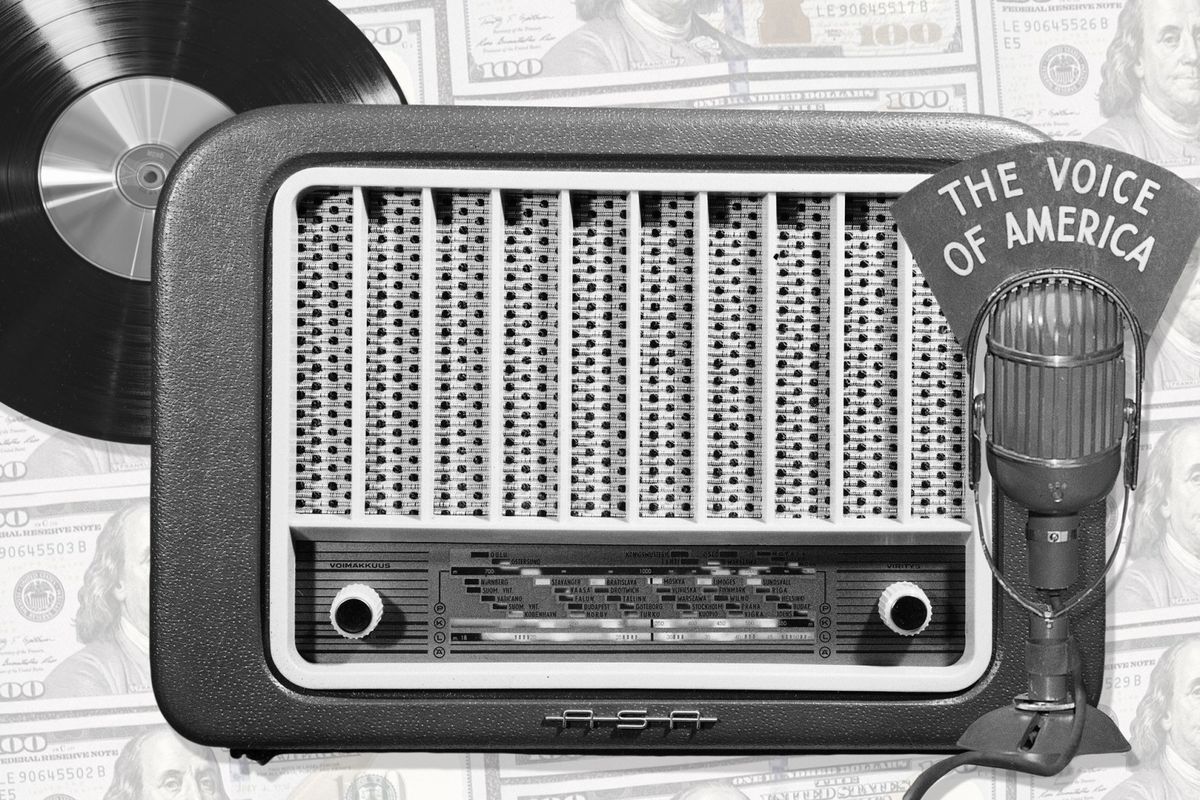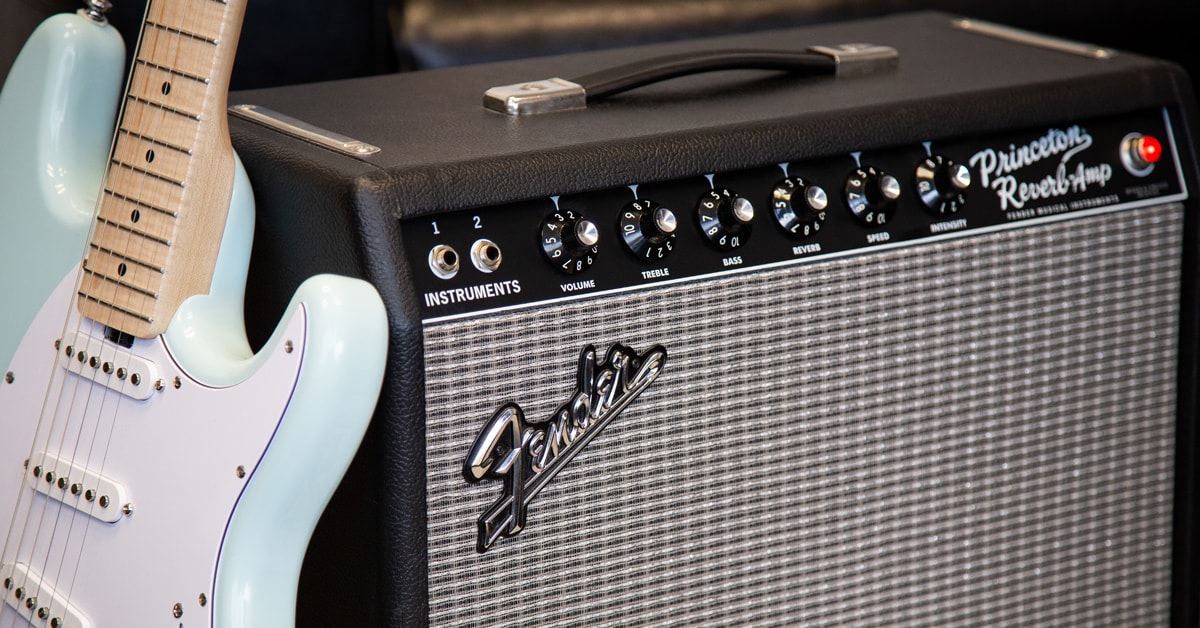Home>Events & Info>Podcast>How Does Podcast Advertising Work


Podcast
How Does Podcast Advertising Work
Modified: January 22, 2024
Discover how podcast advertising works and the impact it can have on reaching your target audience. Learn how to leverage the power of podcasting to grow your business.
(Many of the links in this article redirect to a specific reviewed product. Your purchase of these products through affiliate links helps to generate commission for AudioLover.com, at no extra cost. Learn more)
Table of Contents
- Introduction
- What is Podcast Advertising?
- The Growth of Podcast Advertising
- How Podcast Advertising Works
- Targeting Audiences in Podcast Advertising
- Types of Podcast Advertising
- Benefits of Podcast Advertising
- Challenges in Podcast Advertising
- Tips for Successful Podcast Advertising
- Case Studies of Successful Podcast Advertising Campaigns
- Conclusion
Introduction
Podcasting has become an increasingly popular medium in recent years, with millions of people tuning in to listen to their favorite shows. As the popularity of podcasts continues to rise, so does the opportunity for businesses and brands to reach their target audience through podcast advertising.
Podcast advertising is a form of audio advertising where brands promote their products or services within a podcast episode. It allows businesses to tap into the engaged and loyal podcast audience, who are actively seeking out content and have a strong connection with the podcast hosts.
The growth of podcast advertising has been remarkable. According to a study by eMarketer, podcast ad spending in the United States is projected to reach $1.6 billion by 2022, showcasing the immense potential of this advertising channel.
So, how does podcast advertising work? It involves the placement of ads at various points within a podcast episode. These ads can take the form of pre-roll, mid-roll, or post-roll placements, depending on the agreement between the advertiser and the podcast host. This allows brands to capture the attention of listeners during key moments of the podcast, ensuring maximum impact and brand exposure.
Podcast advertising offers a unique opportunity for businesses to target specific audiences. Advertisers can choose podcasts that align with their target demographic and interests, ensuring that their message reaches the right people. This hyper-targeting ability is one of the key advantages of podcast advertising, enabling businesses to deliver tailored messages to niche audiences.
There are different types of podcast advertising available, including host-read ads, dynamically-inserted ads, and branded podcasts. Host-read ads are typically read by the podcast host themselves, creating a personal and authentic connection with the audience. Dynamically-inserted ads are pre-recorded commercials that are seamlessly inserted into the podcast episode based on the listener’s location or demographics. Branded podcasts, on the other hand, involve the creation of a podcast by a brand itself, allowing them to tell their story and connect with their audience on a deeper level.
In the following sections, we will delve deeper into the workings of podcast advertising, the benefits it offers, and the challenges advertisers may face. We will also explore tips for successful podcast advertising and highlight case studies of brands that have effectively utilized this medium to drive results. So, let’s dive in and uncover the world of podcast advertising!
What is Podcast Advertising?
Podcast advertising is a form of audio advertising where brands and businesses promote their products or services within a podcast episode. It involves the integration of advertisements into podcast content, allowing advertisers to reach a highly engaged and captive audience.
Unlike traditional radio or television advertising, podcast advertising takes advantage of the intimate and personal nature of the podcast medium. Listeners often develop a strong connection with the podcast hosts, considering them as trusted sources of information and entertainment. This connection makes podcast advertising effective in delivering brand messages and driving conversions.
There are several key elements that differentiate podcast advertising from other forms of advertising:
- Targeted Audience: Podcasts have a specific niche or topic, attracting listeners who have a genuine interest in that subject matter. This targeted audience allows advertisers to reach a specific demographic or market segment that aligns with their brand.
- Host Endorsements: In many cases, podcast ads are read by the podcast host themselves, providing a personal touch and a sense of authenticity. Listeners often trust the recommendations made by hosts, making host-read ads highly influential.
- Less Ad Clutter: Compared to other forms of media, such as television or online videos, podcasts typically have fewer ad interruptions. This means that podcast ads have less competition for attention and can stand out more effectively.
- Longer Ad Lifespan: Unlike traditional radio ads that are only heard once, podcast ads have a longer lifespan. Listeners can discover and listen to older episodes, meaning that your ad can continue to reach new audiences even after the initial release.
- Ad Placement Options: Podcast ads can be placed at different points within an episode, offering flexibility for advertisers. They can choose to have ads at the beginning (pre-roll), middle (mid-roll), or end (post-roll) of the podcast episode.
Overall, podcast advertising provides a unique opportunity for brands to connect with an attentive and dedicated audience. By leveraging the trust and influence of podcast hosts and targeting specific niche markets, advertisers can effectively promote their products or services and achieve their marketing goals.
The Growth of Podcast Advertising
Podcast advertising has experienced significant growth in recent years, becoming a lucrative and influential advertising medium. Several factors have contributed to the rise of podcast advertising, making it an attractive option for businesses and brands.
One of the primary drivers of podcast advertising’s growth is the increasing popularity of podcasts themselves. According to the Infinite Dial 2021 study by Edison Research, over 155 million people in the United States have listened to a podcast, representing more than half of the population above the age of 12. This growing audience base offers a massive potential reach for advertisers.
In addition to the expanding audience, podcast listeners are highly engaged and loyal. They actively seek out content related to their interests and regularly listen to podcasts, often consuming multiple episodes per week. This level of engagement and attentiveness provides a prime opportunity for advertisers to capture the attention of their target audience.
The monetization of podcasts through advertising has also contributed to the growth of podcast advertising. As podcasting continues to gain traction, content creators and podcast networks have sought ways to generate revenue. Advertising offers a sustainable and profitable model for podcasters to monetize their shows while delivering valuable content to their audience.
Furthermore, the versatility and effectiveness of podcast advertising have played a significant role in its growth. Podcast ads have a unique ability to build brand awareness and establish a strong connection with listeners. The intimate nature of the podcast medium creates a sense of trust and credibility, making host-read ads particularly impactful. Listeners view podcast hosts as influential figures and are more likely to trust their recommendations, leading to higher engagement and conversion rates.
The growth of podcast advertising can also be attributed to advancements in technology. Dynamic ad insertion allows advertisers to insert targeted ads into podcast episodes based on the listener’s location or demographics. This level of targeting ensures that ads are delivered to the most relevant audience, maximizing their effectiveness. Additionally, podcast analytics provide advertisers with valuable insights into listener demographics and engagement metrics, allowing for better campaign optimization and ROI tracking.
The podcast advertising industry is projected to continue its upward trajectory. According to eMarketer, podcast ad spending in the United States is expected to reach $1.6 billion by 2022, showcasing the immense growth potential of this advertising medium. As more businesses recognize the reach and engagement of podcast listeners, they are allocating more of their advertising budgets towards podcast advertising campaigns.
In the next sections, we will explore how podcast advertising works, the targeting options available for advertisers, the different types of podcast advertising, and the benefits and challenges of utilizing this medium for advertising purposes.
How Podcast Advertising Works
Podcast advertising operates on a unique model that allows brands to integrate their messages into podcast episodes. Understanding how podcast advertising works is crucial for advertisers looking to tap into the growing podcast audience and effectively reach their target market.
Here’s a breakdown of the process:
- Identifying Podcasts: The first step in podcast advertising is identifying podcasts that align with your target audience and brand values. Researching and selecting podcasts that have a similar demographic or niche audience as your target market ensures that your message reaches the right listeners.
- Connecting with Podcast Hosts or Ad Networks: Once you have identified the podcasts you want to advertise on, you can connect directly with the podcast hosts or work with ad networks that facilitate podcast advertising. Podcast hosts often have their own guidelines and rates for advertising, while ad networks provide a broader reach across multiple podcasts.
- Selecting Ad Placement: Podcast ads can be placed at different points within an episode, including pre-roll (at the beginning), mid-roll (during the episode), or post-roll (at the end). Depending on your advertising goals and budget, you can choose the placement that suits your campaign best.
- Creating Ad Content: Once you have secured your ad placement, it’s time to create your ad content. The ad can take the form of a host-read ad, where the podcast host reads a script provided by the advertiser, or a pre-recorded ad that is seamlessly inserted into the episode.
- Tracking Metrics: To measure the effectiveness of your podcast advertising, tracking metrics are essential. Advertisers can track metrics like impressions, downloads, click-through rates, and conversion rates to evaluate the success of their campaigns and make data-driven decisions for future advertising efforts.
- Optimizing and Iterating: Podcast advertising is an iterative process. Analyzing the performance data allows advertisers to optimize their campaigns for better results. They can refine their targeting, adjust ad content, and experiment with different podcast placements to maximize the impact of their advertising efforts.
It’s important to note that the specific process and details may vary depending on the podcast host or ad network you work with. Some podcast hosts offer additional advertising options, such as sponsorship opportunities, while others may have restrictions on certain industries or content.
Overall, podcast advertising allows brands to connect with their target audience in an engaging and intimate environment. By leveraging the influence of podcast hosts and carefully selecting podcasts that align with their brand, advertisers can effectively deliver their message to a captive audience and achieve their marketing objectives.
Next, we will explore the different targeting options available in podcast advertising and how they enable advertisers to reach their desired audience.
Targeting Audiences in Podcast Advertising
One of the key advantages of podcast advertising is the ability to target specific audiences. Podcasts cover a wide range of topics and appeal to diverse demographics, making it an effective medium for reaching niche markets. By understanding the targeting options available in podcast advertising, advertisers can ensure their message reaches the right audience and maximizes campaign effectiveness.
Here are some of the targeting options commonly used in podcast advertising:
- Genre or Topic: Podcasts cover a vast range of topics, from true crime to business, health, and beyond. By selecting podcasts that align with your target audience’s interests and demographic, you can ensure that your message resonates with the right listeners.
- Geographic Location: If your business operates in specific regions or markets, targeting listeners in those areas can be crucial. With dynamic ad insertion technology, advertisers can deliver ads based on the listener’s geographic location, ensuring your message is relevant to the local audience.
- Demographics: Podcast hosts and networks often provide demographic data, such as age, gender, and interests of their listeners. This information can help advertisers choose podcasts that align with their target audience’s demographic profile.
- Listener Behavior: Some podcast platforms and host-read ad networks provide insights into listener behavior, such as the number of episodes listened to or the duration of listening. This data can be useful for targeting engaged and active listeners who are more likely to pay attention to and respond to ads.
- Podcast Size and Reach: Podcasts vary in terms of their audience size and reach. Advertisers can choose between larger, more popular podcasts that have a broader reach or smaller, niche podcasts that cater to specific interests or industries.
It’s important for advertisers to consider their target audience’s preferences, behaviors, and demographics when selecting podcasts for their advertising campaigns. Matching the podcast content with the target audience’s interests and aligning with their values can greatly increase the impact and effectiveness of the advertising message.
Advertisers can work with podcast hosts directly, who may have information about their audience demographics, or partner with ad networks that provide data-driven targeting options. These networks aggregate multiple podcasts, offering advertisers a wider reach and more advanced targeting capabilities based on listener data.
By targeting specific audiences in podcast advertising, brands can ensure their message reaches listeners who are more likely to have an interest in their products or services. This hyper-targeting capability leads to higher engagement, better conversion rates, and a more efficient use of advertising budgets.
In the next section, we will explore the different types of podcast advertising and how they can be utilized to effectively engage with the target audience.
Types of Podcast Advertising
Podcast advertising offers various formats and types to suit different advertising goals and budgets. Advertisers can choose from different options based on their objectives, whether it’s brand awareness, lead generation, or driving conversions. Here are the common types of podcast advertising:
- Host-Read Ads: Host-read ads are the most popular and effective type of podcast advertising. In this format, the podcast host personally delivers the ad content, seamlessly integrating it into the episode. Host-read ads are often conversational and authentic, as the host can share their personal experiences or genuine recommendations, creating a direct connection with the audience.
- Dynamically-Inserted Ads: Dynamically-inserted ads are pre-recorded commercials that are dynamically inserted into podcast episodes. These ads can be customized and varied based on the listener’s geography, interests, or other targeting parameters. This type of ad allows for efficient targeting and scalability, as it can be easily distributed across multiple podcast episodes.
- Sponsorship or Mention: Some podcasts offer sponsorship or mention opportunities where the advertiser’s brand is mentioned at the beginning, middle, or end of the episode. It can involve a brief mention, a dedicated segment, or even the podcast host endorsing the brand. Sponsorship or mention ads provide high visibility and association with the podcast’s content but typically come at a premium price.
- Branded Podcasts: Branded podcasts involve the creation of a podcast series specifically by a brand. These podcasts focus on providing valuable content related to the brand’s industry or target audience’s interests, establishing the brand as a thought leader. Branded podcasts can include subtle brand mentions or sponsored episodes, allowing the brand to connect with the audience on a deeper level and build trust over time.
- Affiliate Marketing: While not exclusive to podcasting, affiliate marketing is commonly used in podcast advertising. In this model, podcast hosts promote products or services using unique affiliate links. When audience members make a purchase through the link, the host receives a commission. Affiliate marketing allows for performance-based advertising, where advertisers only pay when there’s a measurable action taken.
Each type of podcast advertising offers its own benefits and considerations. Host-read ads provide authenticity and trust from the host, while dynamically-inserted ads allow for precise targeting. Sponsorship or mention ads provide high visibility, and branded podcasts offer a unique opportunity to engage the audience in a content-centric manner. Affiliate marketing, on the other hand, allows advertisers to track conversions and pay only for results.
Advertisers should consider their goals, budget, target audience, and the podcast’s format and audience when choosing the type of podcast advertising that best aligns with their needs.
In the next section, we will explore the benefits that podcast advertising offers to advertisers and how it can positively impact their marketing campaigns.
Benefits of Podcast Advertising
Podcast advertising offers numerous benefits for advertisers seeking to reach their target audience in a highly engaged and influential medium. By tapping into the growing popularity of podcasts, businesses can leverage these advantages to enhance their marketing efforts:
- Highly Engaged and Loyal Audience: Podcast listeners are highly engaged and loyal. They actively seek out podcast content and often listen to multiple episodes, resulting in longer exposure to ads. This level of engagement increases the likelihood of audience members paying attention to and being receptive to advertising messages.
- Targeted Reach: Podcasts cover a wide range of topics and attract niche audiences. Advertisers can choose podcasts that align with their target audience’s interests and demographics, ensuring their message reaches the right people. This level of targeting helps maximize the impact and effectiveness of the advertising campaign.
- Authenticity and Trust: Host-read ads, a popular format in podcast advertising, create a sense of authenticity and trust. Listeners often view podcast hosts as trusted sources of information and entertainment, making them more receptive to the podcast host’s endorsement of a brand or product. This built-in trust can have a significant influence on the perception and response to the advertising message.
- Less Ad Clutter: Compared to other media channels, such as television or online videos, podcasts have less ad clutter. This means that podcast ads have a higher chance of standing out and capturing the audience’s attention. With fewer competing ads, advertisers can effectively deliver their message to the listeners without being overshadowed.
- Longer Ad Lifespan: Unlike traditional radio ads, which have a limited lifespan, podcast ads have a longer shelf life. Podcast episodes can be discovered and listened to months or even years after their release, meaning that ads can continue to reach new audiences over an extended period. This extended ad lifespan increases the potential reach and impact of podcast advertising campaigns.
- Metrics and Measurement: Advertisers can track various metrics in podcast advertising to measure the effectiveness of their campaigns. Metrics such as downloads, impressions, click-through rates, and conversion rates provide valuable insights into the campaign’s performance. This data-driven approach allows advertisers to optimize their campaigns and make informed decisions for future advertising efforts.
By leveraging these benefits, podcast advertising can amplify brand awareness, drive engagement, and ultimately lead to higher conversion rates. The unique characteristics of podcasts, such as the engaged audience, targeting options, and authenticity, contribute to the success of podcast advertising campaigns.
In the next section, we will discuss some of the challenges that advertisers may encounter when implementing podcast advertising and how to overcome them.
Challenges in Podcast Advertising
Although podcast advertising offers numerous advantages, there are also challenges that advertisers need to be aware of and navigate effectively. Understanding these challenges can help advertisers plan their podcast advertising campaigns more strategically. Here are some of the key challenges:
- Measuring ROI: Measuring the return on investment (ROI) of podcast advertising can be challenging. Unlike digital advertising platforms that offer robust tracking and attribution capabilities, podcast advertising metrics can be limited. While metrics like downloads and click-through rates provide insight, accurately tying those metrics to conversions and attributing them directly to the podcast ad can be complex.
- Varying Ad Performance: Podcast ads’ performance can vary across different episodes and podcasts. Factors such as episode topic, host-read delivery, and timing of ads within an episode can influence the effectiveness of the ad. Advertisers may need to conduct A/B testing and monitor performance to optimize their campaigns for better results.
- Ad Placement: Determining the optimal placement for podcast ads can be challenging. While host-read ads integrated within the content can be highly effective, they can also affect the flow of the episode for some listeners. Advertisers need to carefully consider the placement options based on the target audience’s preferences and the podcast’s format to ensure a seamless listener experience.
- Ad Blocking: Ad-blocking technology poses a challenge in podcast advertising. Some listeners may use ad-blocking software or skip through ad segments, potentially limiting the ad’s reach and impact. Advertisers should focus on creating compelling and engaging ads that capture the listener’s attention even if they choose to skip.
- Podcast Discovery: With millions of podcasts available, discovery can be a challenge for advertisers. Identifying the right podcasts that align with the target audience and brand may require extensive research and negotiation with podcast hosts or ad networks. Leveraging audience analytics and audience demographics can help pinpoint podcasts that best match the target market.
Despite these challenges, podcast advertising remains a powerful medium for reaching engaged audiences and driving brand awareness. Advertisers can overcome these challenges by collaborating closely with podcast hosts or ad networks, leveraging advanced targeting options, providing compelling ad content, and continually optimizing their campaigns based on performance data.
In the next section, we will provide valuable tips for advertisers to effectively leverage podcast advertising and maximize their results.
Tips for Successful Podcast Advertising
To maximize the effectiveness of podcast advertising campaigns, advertisers can implement a few key strategies and tips. By following these recommendations, advertisers can optimize their reach, engagement, and conversions. Here are some tips for successful podcast advertising:
- Define Your Goals: Clearly define your advertising goals and objectives before launching a podcast advertising campaign. Whether it’s increasing brand awareness, driving website traffic, or generating leads, having well-defined goals allows you to align your messaging, targeting, and metrics accordingly.
- Research and Select the Right Podcasts: Thoroughly research and select podcasts that align with your target audience and brand. Consider factors such as audience demographics, topic relevance, and listener engagement. Engaging in active partnerships with podcast hosts or working with trusted ad networks can provide access to valuable insights and recommendations.
- Create Engaging Ad Content: Craft compelling and authentic ad content that resonates with the podcast’s audience. Consider the podcast’s tone and style, and aim to create ads that seamlessly integrate into the episodes. Utilize storytelling techniques, humor, or personal anecdotes to capture listeners’ attention and create a memorable impression.
- Experiment with Placement and Ad Length: Test different ad placements (pre-roll, mid-roll, or post-roll) and ad lengths to find the optimal combination for your campaign objectives. Consider the flow of the episode and listener preferences when determining the most effective placement and duration. Monitor performance metrics to identify which placements drive higher engagement and conversions.
- Personalize Your Messaging: Leverage the unique nature of podcast advertising to deliver personalized messages. If working with host-read ads, provide hosts with key talking points and allow them to use their own conversational style to authentically endorse your brand. Tailor your messaging to resonate with the specific podcast’s audience and find common ground.
- Track and Analyze Metrics: Utilize available podcast analytics and tracking tools to measure the performance of your ads. Track metrics such as downloads, click-through rates, and conversions to assess the effectiveness of your campaign. Continuously monitor and analyze the data to make data-driven optimizations and refinements to enhance your campaign’s success.
- Build Long-Term Partnerships: Consider establishing long-term partnerships with podcast hosts or networks. Regularly advertising on a particular podcast or network can cultivate brand familiarity and repetition, leading to increased brand trust and recall among the audience. Long-term partnerships also enable you to build a stronger rapport with hosts, enhancing the authenticity and effectiveness of your ad placements.
By implementing these tips, advertisers can enhance the impact and success of their podcast advertising campaigns. Continual optimization, strategic targeting, and engaging ad content will contribute to building brand awareness, driving audience engagement, and ultimately increasing conversions.
In the next section, we will explore case studies of successful podcast advertising campaigns to illustrate the effectiveness of this advertising medium.
Case Studies of Successful Podcast Advertising Campaigns
Several brands have successfully leveraged podcast advertising to achieve their marketing goals. Let’s explore a few notable case studies that demonstrate the effectiveness of podcast advertising campaigns:
- Mailchimp and “Serial”: In 2014, Mailchimp, an email marketing platform, sponsored the popular true crime podcast “Serial.” They strategically placed ads before each episode, reaching a wide audience interested in storytelling and crime narratives. The campaign’s success led to significant brand visibility and increased brand recognition for Mailchimp, showcasing the power of podcast advertising for building brand awareness.
- Squarespace and “StartUp”: Squarespace, a website-building platform, partnered with the podcast “StartUp.” They utilized host-read ads to emphasize Squarespace’s user-friendly website creation features. The success of the campaign demonstrated how podcast advertising can effectively drive conversions and lead generation. The collaboration between the podcast and Squarespace provided value to the listeners and facilitated a seamless integration of the brand’s messaging within the podcast episodes.
- Casper and Various Comedy Podcasts: Casper, a mattress company, strategically targeted comedy podcasts to reach a relevant and engaged audience. By sponsoring shows like “Comedy Bang! Bang!” and “How Did This Get Made?,” Casper effectively engaged with listeners who enjoy comedy and entertainment. The campaign’s success resulted in increased brand awareness, higher website traffic, and a notable boost in sales for Casper.
- Blue Apron and Multiple Food Podcasts: Blue Apron, a meal kit delivery service, partnered with popular food-related podcasts to reach their target audience. By collaborating with shows like “Home Cooking” and “Gastropod,” Blue Apron leveraged the influence of food podcast hosts to promote their service. The campaign helped drive brand affinity, increase brand consideration, and boost customer acquisition for Blue Apron.
These case studies illustrate the ability of podcast advertising to generate brand awareness, drive conversions, and connect with targeted audiences. By carefully selecting relevant podcasts, crafting engaging ads, and aligning with the podcast’s content and audience, these brands successfully utilized podcast advertising to achieve their marketing objectives.
These examples demonstrate that podcast advertising can be an effective and impactful channel for brands of various industries and sizes. It highlights the importance of strategic planning, audience alignment, and creating compelling content to drive results in podcast advertising campaigns.
In the final section, we will conclude our exploration of podcast advertising, summarizing its key benefits and potential for advertisers.
Conclusion
Podcast advertising has emerged as a powerful and influential medium for reaching target audiences in an engaged and captive environment. As the popularity of podcasts continues to grow, businesses and brands have recognized the immense potential of podcast advertising to drive brand awareness, engagement, and conversions.
Throughout this article, we have explored the various aspects of podcast advertising, from understanding how it works to the targeting options available. We have seen that podcast advertising offers unique advantages, including a highly engaged and loyal audience, targeted reach, authenticity, and less ad clutter. Advertisers can strategically select podcasts that align with their brand values and appeal to their target audience, delivering personalized messages that resonate with listeners.
Despite the challenges of measuring ROI and varying ad performance, advertisers can overcome these obstacles through careful planning, continual optimization, and leveraging podcast analytics. By tracking metrics and making data-driven decisions, advertisers can refine their campaigns and improve their results over time.
Successful podcast advertising campaigns showcased through case studies from brands like Mailchimp, Squarespace, Casper, and Blue Apron demonstrate the effectiveness of this advertising medium in achieving marketing objectives. These examples emphasize the importance of selecting the right podcasts, creating engaging content, and aligning with the podcast’s audience to drive brand awareness, conversions, and customer acquisition.
In conclusion, podcast advertising presents a unique opportunity for brands to connect with highly engaged audiences and deliver targeted messages in an intimate and influential environment. As the podcasting industry continues to grow, podcast advertising will likely become an increasingly essential component of successful marketing strategies.
By harnessing the power of podcast advertising, brands can amplify their reach, establish credibility, and drive meaningful engagement with their target audience, ultimately leading to increased brand awareness, customer loyalty, and business growth.











